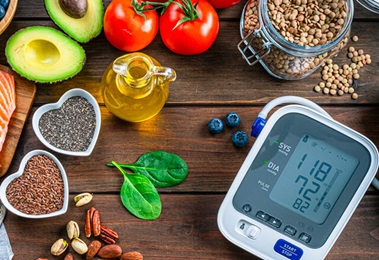A Healthy Spin on Favorite Holiday Foods
The holidays are often a tempting time for children (and parents!) to overindulge in traditional holiday meals and desserts, many of which contain ingredients that are high in fat, sodium and sugar. However, there are many ways to help kids enjoy their holiday favorites by taking a different spin on old recipes. Megan Armstrong, R.D., L.D., registered dietitian at Fit4AllTeens and Fit4Allkids at Johns Hopkins All Children's Hospital, shares ways parents can help provide children with more heart-healthy food choices.
Main Dishes
Many casserole-type meals or appetizers require creamed soups, cream, lots of cheese, bacon, mayonnaise, sour cream and cream cheese, which equals saturated fat, calories and unwanted weight gain.
Try this:
- Replace half of any high-fat dairy product with a lower-fat version. By replacing part, but not all of the dairy, no one should notice a texture or taste difference. Nonfat Greek yogurt is a great sour cream substitute, which adds protein and probiotics.
- Replace cream soups with a stock thickened with cornstarch or flour or add low-fat mashed potatoes, pureed vegetables or a reduced-fat soup already prepared. Add cornstarch or flour mixed with a small amount of cold liquid first, then gradually pour into hot soup to avoid clumping.
- Use lean protein: 90 percent lean meats, turkey bacon and pork loin. Aim for sautéing vegetables in wine, broth or fruit juice (apple cider is a great choice) to increase flavor. Olive oil is also great (instead of butter) because while it’s still a fat, the olive oil is considered a healthy fat.
Baked 'Goods' and Desserts
Most of the calories in baked goods come from added sugar and fat, and are low in fiber or whole grains. Fat creates an even texture and provides moisture, but also may add cholesterol and saturated fat.
Try this:
- Consider using oats (you can blend plain oatmeal or quick oats at home) which counts as a whole grain, increases the fiber, and slows down absorption making it less impactful on blood sugar.
- Instead of pies, try fruit-based desserts topped with a light crumble. Tasty fruit options include banana, berries or apple. Top with a light layer of crumble (oats, cinnamon, butter) and serve with a scoop of nonfat plain Greek yogurt mixed with honey for an extra touch of sweetness.
- For cakes and quick breads, make from scratch to control the added sodium, sugar and fats. Swap oil or butter for pureed pumpkin, banana, yogurt or applesauce. Add half the salt that is in the recipe to see how it affects the taste, then go heavy on spices such as cinnamon, nutmeg and ginger.
- Use oil or half butter and half fruit puree for best texture and taste. Try making chocolate chip cookies with oil instead of butter, but remove the cookies a few minutes before they are done so they don't get too crispy.
- Replace half the all-purpose flour with whole wheat or use ¾ of the flour as all-purpose and ¼ of it as a nut flour (almond, coconut, chickpea or soynut).
- Make pie crust with a graham cracker crust to save added fat and salt.
- Reduce added sugar by 25 percent (i.e., instead of adding a cup of sugar, add ¾ cup then increase the spices such as vanilla, almond or cinnamon).
- Use up to 50 percent less chocolate chips, nuts and coconut. Toast the nuts and coconut for added flavor without added calories and use 60 percent cacao chocolate or higher for the best taste.
For more ideas on healthy cooking, check out Johns Hopkins All Children’s free virtual cooking classes.
Johns Hopkins All Children's Hospital Family Health and Wellness
From prevention to intervention, hands-on activities encourage children and families to do their personal best and reach their individual goals by providing the latest nutrition, fitness and mental health information.





